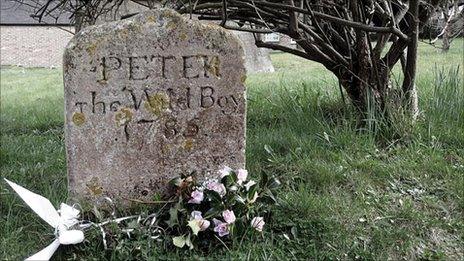University to host international werewolf conference
- Published
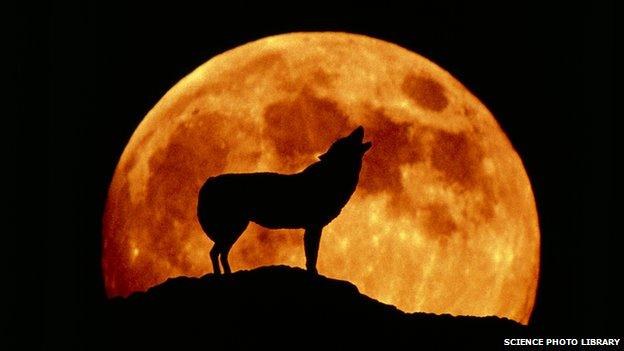
Conference delegates will be served Red Riding Hood biscuits and have the chance to walk with real wolves
With international papers, workshops and a keynote speaker, a three-day conference to be held at the University of Hertfordshire next month resembles most other academic gatherings. What makes this one different is the subject matter: werewolves.
Lycanthropy is a word not often heard.
First coined in the 16th Century, it means the (mythical) transformation of a person into a wolf.
On 3 September - four days after the next full moon - many of the world's leading experts in lycanthropy will gather at the University of Hertfordshire for a werewolf conference.
Tantalising the academic taste buds of delegates will be talks including Rabid Bitches and Fanged Whores, I'm Hairy on the Inside and Barebacking Werewolves in Rural America.
Those seeking an escape from their lecture-hall pens will be able to walk with (real) wolves, eat Red Riding Hood biscuits and picnic beside the Berkhamsted churchyard where the 18th Century remains of "'Peter the Wildboy'" lie.
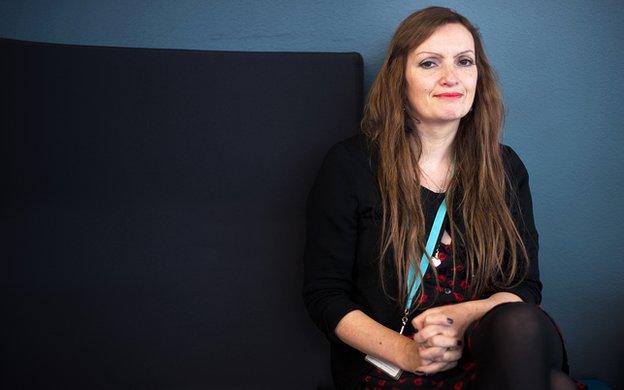
Conference convener Dr Sam George said delegates would explore werewolves in their "many manifestations"
Wolf cupcakes aside, organisers of the conference - called The Company of Wolves - say there is a very serious side to werewolf studies - from history, through literature to the ecological issues surrounding "rewilding".
"People have been fascinated by human-to-wolf transformations down the years, especially in film," says conference convener Dr Sam George. "Many remember Lon Chaney in Wolf Man or the cult classic An American Werewolf in London, which brought werewolves to contemporary audiences.
"But how many people actually know the different ways that you can become a werewolf according to folklore or that there were actually werewolf trials in France and Germany where people were hanged and found guilty of lycanthropy?
"At the conference we want to draw attention to these little-known facts and discuss the werewolf in all its many manifestations and cultural meanings."
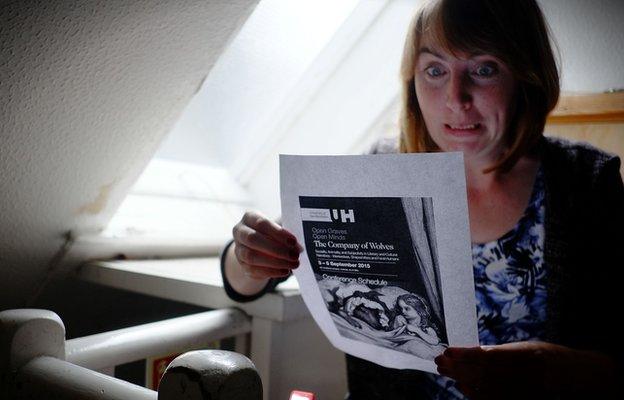
Experts say werewolves and other monsters meet a basic desire to experience fear in a safe environment
Even today, the wolf permeates our language, childhoods and inner worlds, says Kaja Franck, a doctoral student studying the literary werewolf.
Think of the tale of the Three Little Pigs or Little Red Riding Hood, for example, or the phrases "wolf whistle" or "lone wolf", the latter having grown out of its meaning maverick and gaining terrorist overtones.
Ms Franck says the demonisation of wolves probably started with farming in the Middle Ages, when wolves preyed on livestock.
"We tend to have an issue with any creature that competes with us over our food sources or with "man-eaters" - they are really scary because they remind us that we can be in the food chain.
"In the 1300s if you had done something wrong you could gain forgiveness by bringing in some wolves' heads."
But our fascination with wolves goes beyond food and into the realms of sexuality, says Ms Franck.
Werewolves are nearly always males, she says, while cats (think ancient Egypt, "Cat Woman" or the modern US-term "cougar") are usually female.
"The story of Little Red Riding Hood is really a warning to girls about predatory males who seem nice and charming but are, in fact, far from it. They are dangerous."

A bite-sized guide to werewolves
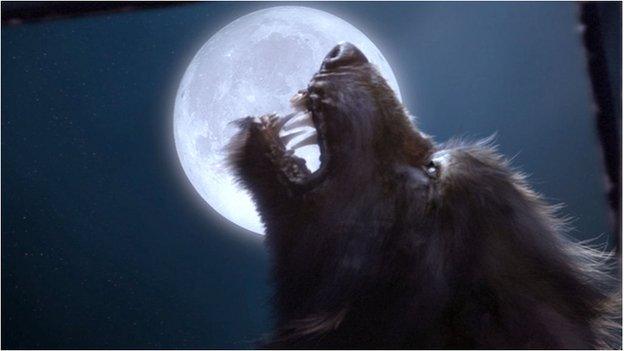
Some of those put on trial for lycanthropy admitted being werewolves. One of them, a Rhenish farmer Peter Stumpp, confessed to being a werewolf in 1589 after he was stretched on the rack and further tortured
Bram Stoker's Dracula was heavily influenced by werewolf folklore
The idea that you become a werewolf through a bite is a mid-20th Century idea
You could become a werewolf in folklore by various means including curses, being cursed by the devil, by wearing a girdle made of wolfskin and by applying salves made of human body fat
The use of a silver bullet to kill werewolves is a modern concept

And far from being a lingering remnant of medieval anxiety, werewolves are still capturing the popular imagination - think Teen Wolf or, more recently, the Twilight films or the CBBC and ZDF co-production Wolfblood.
At their heart, says Ms Franck, are issues of transition. So the boy turning into a werewolf is a metaphor for turning from a child into an adult, from innocence to experience.
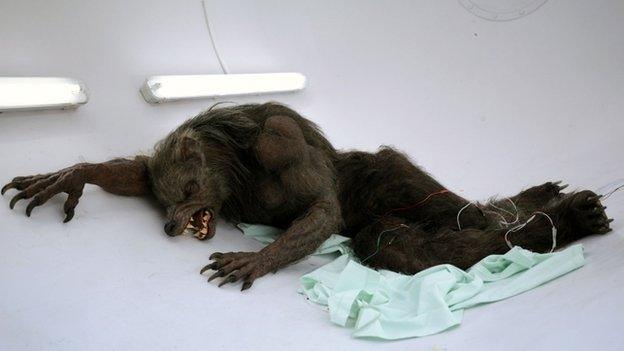
Nina becomes a werewolf in BBC 3's comedy-drama series Being Human
"One of the key questions here is what monsters tell us about ourselves, what it is to be human.
"The reason I think werewolves and monsters stay so interesting is that we have always been interested in things that scare us and, as we get increasingly secular, sometimes the easiest ways to this is through non-existent creatures.
"The werewolf can be adapted in many different ways, it is ripe for being transformed. We have good werewolves, bad werewolves, conservative werewolves, female werewolves, teenage werewolves and so on.
"Ultimately, we are interested in the dark side and we use fear as a way of breaking down barriers and thinking about what it is to be human in a safe arena."
- Published26 November 2013
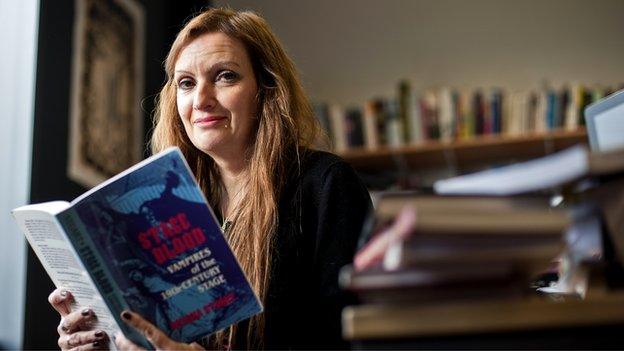
- Published8 August 2011
